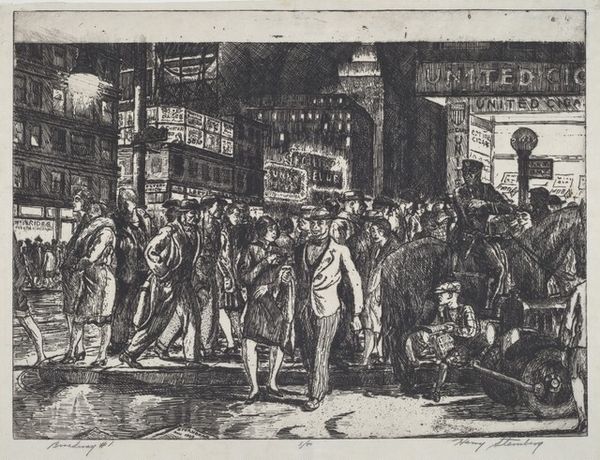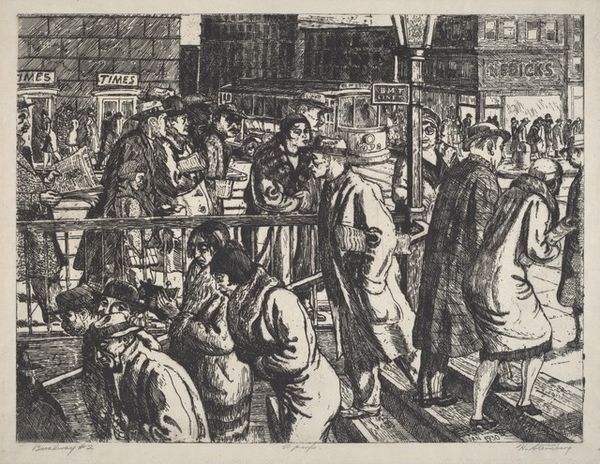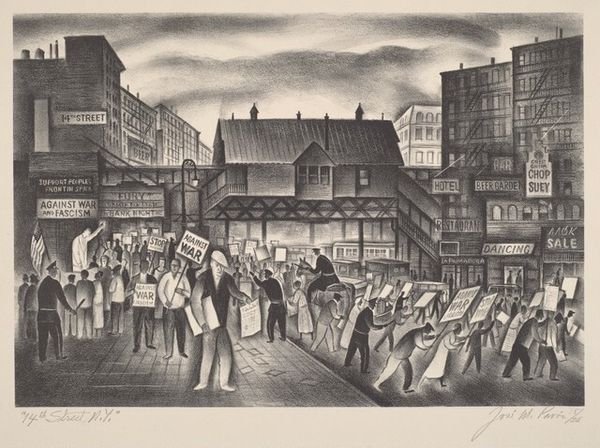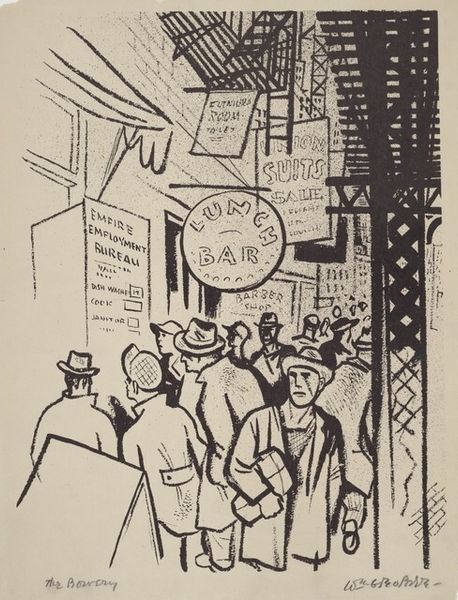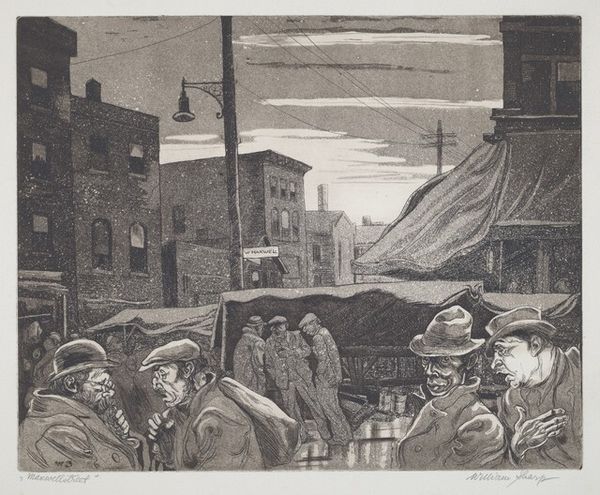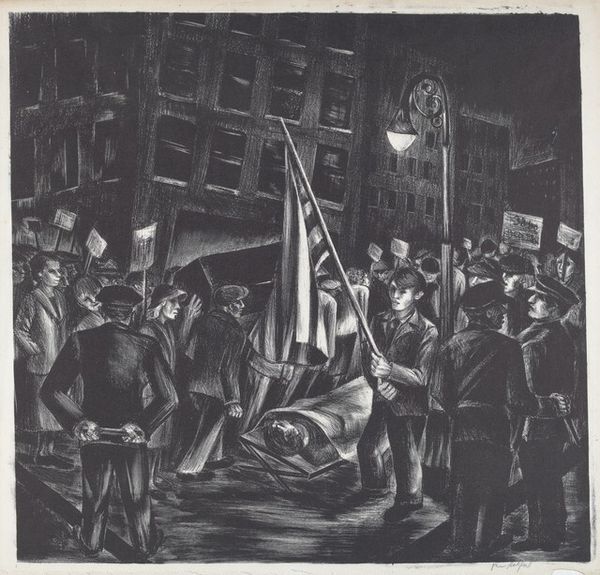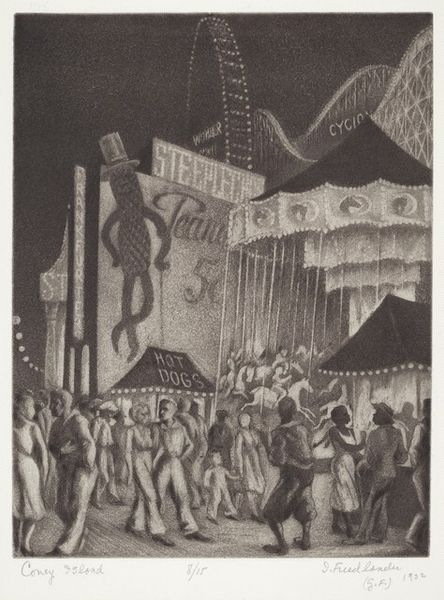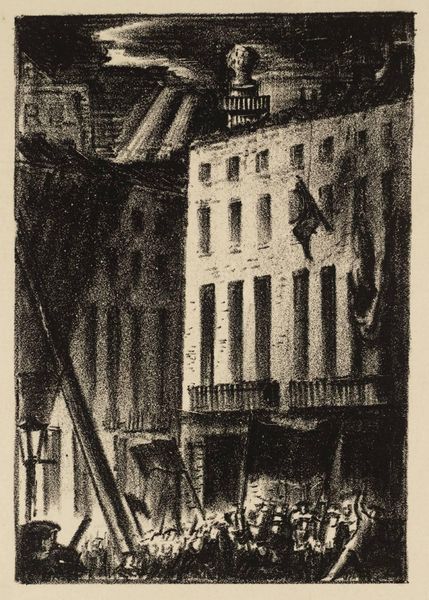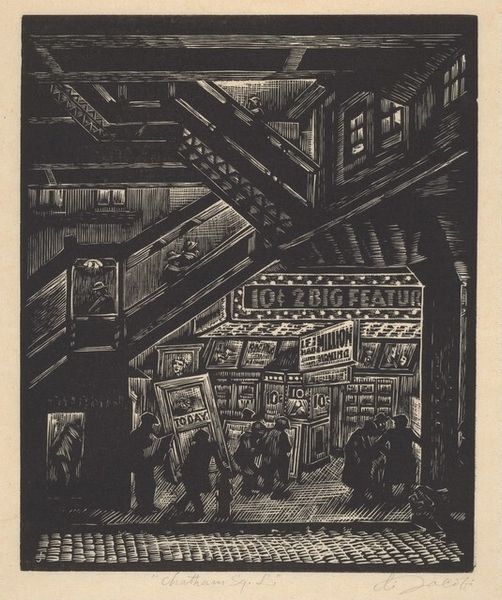
Dimensions: Image: 308 x 445 mm Sheet: 380 x 518 mm
Copyright: National Gallery of Art: CC0 1.0
Curator: This is Glenn O. Coleman's "Untitled (Garden)" from 1928, a lithograph print utilizing etching and graphite. Editor: My immediate reaction is… overwhelming. So many figures crammed together in what seems like a bustling cityscape. It feels like a glimpse into another era, shrouded in a sort of nostalgic haze. Curator: Coleman was deeply invested in portraying everyday urban life. Note the density, how he uses graphite to build up layers, creating a sense of palpable atmosphere, of collective experience. Editor: Right. It’s less about idealized beauty and more about raw observation. You can almost hear the cacophony of the city: vendors hawking wares, crowds milling, street performers competing for attention. What do we know about the physical act of making the work? Curator: Lithography would have allowed for multiple reproductions, fitting with Coleman's desire to reach a broader audience, democratizing access to art. Consider the sociopolitical context of the time; this piece reflects the vibrancy, but also the anxieties, of early 20th-century urban expansion. The material speaks to this; reproducible but built up painstakingly. Editor: Absolutely, lithography as a medium made it accessible. But then there is the question, who had access? Galleries and collectors, surely. I find myself wondering, who *didn't* see this work. What spaces excluded these depictions? Curator: An excellent point. Museums and their institutional structures play an important role in deciding which art gets the spotlight, which stories are told, and ultimately, what legacy is built. Editor: For me, it’s the ordinary moments in this garden – are they still valued today? Coleman provides an intimate record and shows what a crowded place can offer, yet it is the role of institutions in validating those records that shapes how we perceive and understand urban experience. Curator: Precisely. Thinking about production alongside representation sheds light on the forces that influence the art world's perception of art. It all intertwines to tell this story, beyond what the immediate image shows.
Comments
No comments
Be the first to comment and join the conversation on the ultimate creative platform.
